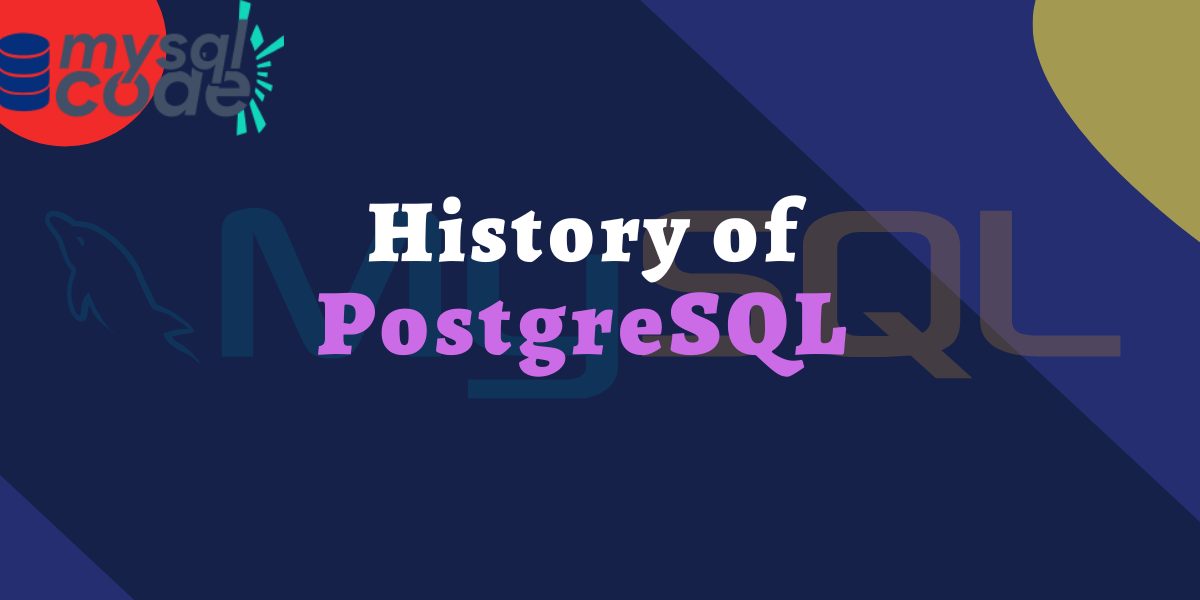PostgresSQL is one of the most popular and widely used database management systems in the world. Its open-source nature and great features make it the most reliable option to use as a database storage backend. In this tutorial, we will see the history of PostgreSQL, its features, and some amazing facts. So, let’s get started!
Introduction to PostgreSQL
The implementation of the POSTGRES project was started in 1986 by professor Michael Stonebraker. The project was sponsored by the Defence Advanced Research Agency, the Army Research Office, ESL, and the national science foundation.
The implementation of the POSTGRES was not started from scratch. Professor Michael Stonebraker was the leader of the project Ingres database which was being developed as a research project at UC Berkeley in 1970. The project went on till 1985. However, Professor Michael left Berkeley in 1982 to make a propriety version of the Ingres database.
The POSTGRES evolved from the Ingres and the actual implementation of the POSTGRES started in 1986. The first demoware of the POSTGRES became effective in 1987 and its demo was shown at ACM-SIGMOD Conference in 1988. However, it was not released for external users till then.
In 1989, POSTGRES was made available to very few external users. Since then, POSTGRES has undergone many major revisions and releases.
Rise and Fall of POSTGRES
After making the database available to external users, it went through many changes. In 1990, version 2 of the POSTGRES with the re-written rule systems got released followed by version 3 in 1991 with the new re-written rule system and the support for multiple storage managers along with the improved query engine.
With the increasing number of users, the requests for support and features started overwhelming. Therefore, after version 4.2, the project officially ended in 1994.
However, Berkeley released the source code of the POSTGRES under an MIT license for other developers.
At this time, POSTGRES was using the POSTQUEL Query Language interpreter instead of SQL.
Return of POSTGRES as POSTGRES95
Two Berkeley graduate students, Andrew Yu and Jolly Chen replaced the query interpreter of the POSTGRES from POSTQUELQL to SQL and that’s how Postgres95 was developed. Interestingly, it was released as an open-source project on the web to get contributions from developers worldwide.
With the release of POSTGRES95, the new program psql was also got provided for interactive SQL queries.
An introduction tutorial of regular SQL features and the developers who contributed to the source code of POSTGRES95 was published.
Release of PostgreSQL
Till that time, Postgres95 has evolved to a great extent, however, the name could not stand. Therefore, the team decided to rename it to PostgreSQL to show the relationship between POSTGRES and its SQL capabilities.
Even after changing the name of POSTGRES to PostgreSQL, people still call it Postgres as it is easier to pronounce or as a tradition.
Since then, developers throughout the world are contributing to and maintaining PostgreSQL as a PostgreSQL Global Development Group.
Features of PostgreSQL
PostgreSQL comes with a wide number of features that help developers to build applications, manage the data and protect data integrity. Let’s see the features of PostgreSQL now.
- Free and Open Source– One of the best features of PostgreSQL is that it is always free. Even if you use it for commercial purposes, no one is going to charge you a single penny. Apart from it, its open-source nature makes it free from glitches, bugs, and high quality.
- Data types– There are a bunch of data types available in the PostgreSQL database. You can even define your own data types apart from the primitive datatypes.
- Data integrity– PostgreSQL provides us with multiple constraints such as NOT NULL, primary and foreign key, UNIQUE, explicit and advisory locks, etc.
- Security– PostgreSQL has a robust access-control system and also offers row-level and column-level security.
- Extendibility– PostgreSQL supports stored functions and stored procedures. Many popular programming languages such as python, Perl, Java, and Rust can easily use the PostgreSQL database.
Apart from these, there are tons of features that PostgreSQL offers such as full-text search, indexing, JSON path expressions, etc.
Is it Worth Learning PostgreSQL?
Is learning PostgreSQL worth it? Absolutely yes without thinking twice.
Some of the biggest tech giants in the world such as Apple, Instagram, IMDB, Reddit, Skype, Spotify, Twitch, and a bunch of others use PostgreSQL as their primary storage option.
Note that, PostgreSQL is always free and open source. Plus it’s actively maintained too. Therefore, its demand will not come to fall anytime soon.
Its rich features set, huge community, easy learning, and commercial support from other companies make it the best choice to learn it right now without wasting a second.
